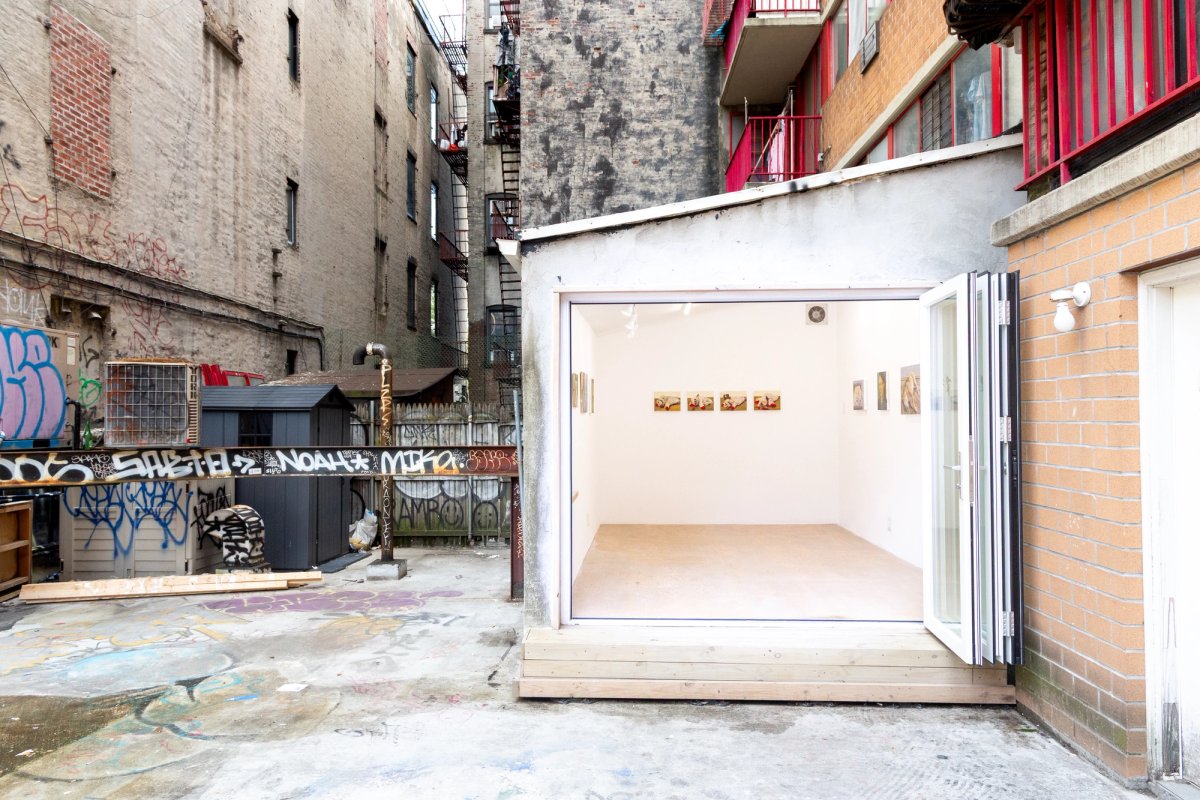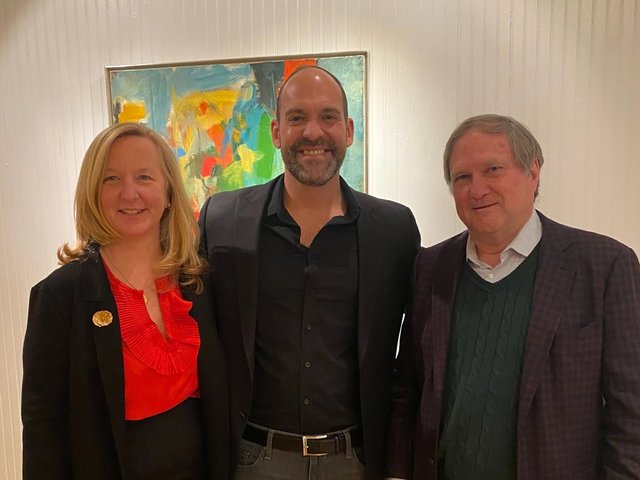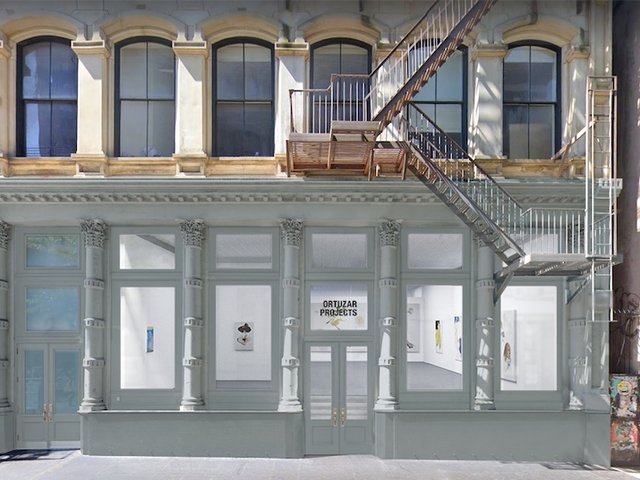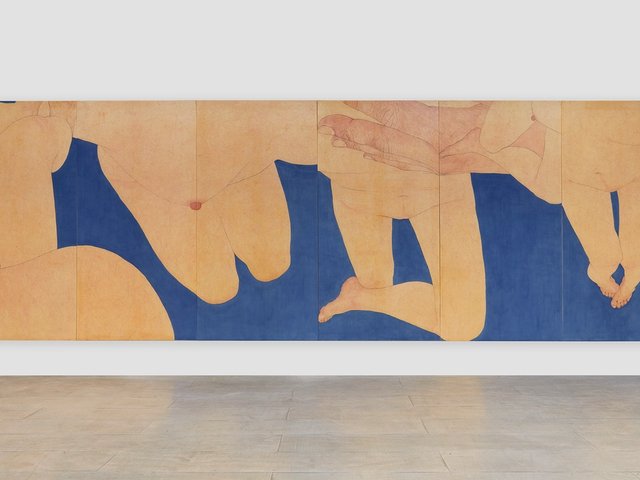Market Gallery, which has been hosting small, intimate solo shows out of a storage shed on its founder Adam Zhu’s apartment balcony for less than a year, opened its first group exhibition with a pop-up in Manhattan’s Soho neighbourhood last Thursday (17 July). The crowd—which skewed young, with more than a few people carrying skateboards—spilled out onto the cobblestones of Mercer Street in Soho, more famous today for the area’s high-end retail than the artists’ lofts of decades past.
But that night, the throng was there for the opening of Revolve (until 10 August), a take on the typical New York summer group show. The exhibition was organised by Zhu and his friends Jack Irv and Andrew Kass. The three are New York-based artists who have known each other since they were teenagers. Irv and Kass had the opportunity to show at 51 Mercer Street while the space was between leases, and they invited Zhu and Market Gallery to take part. The space was formerly home to the late fashion designer Virgil Abloh’s Em Pty Gallery, a retail location for his Off-White brand that also hosted art exhibitions.
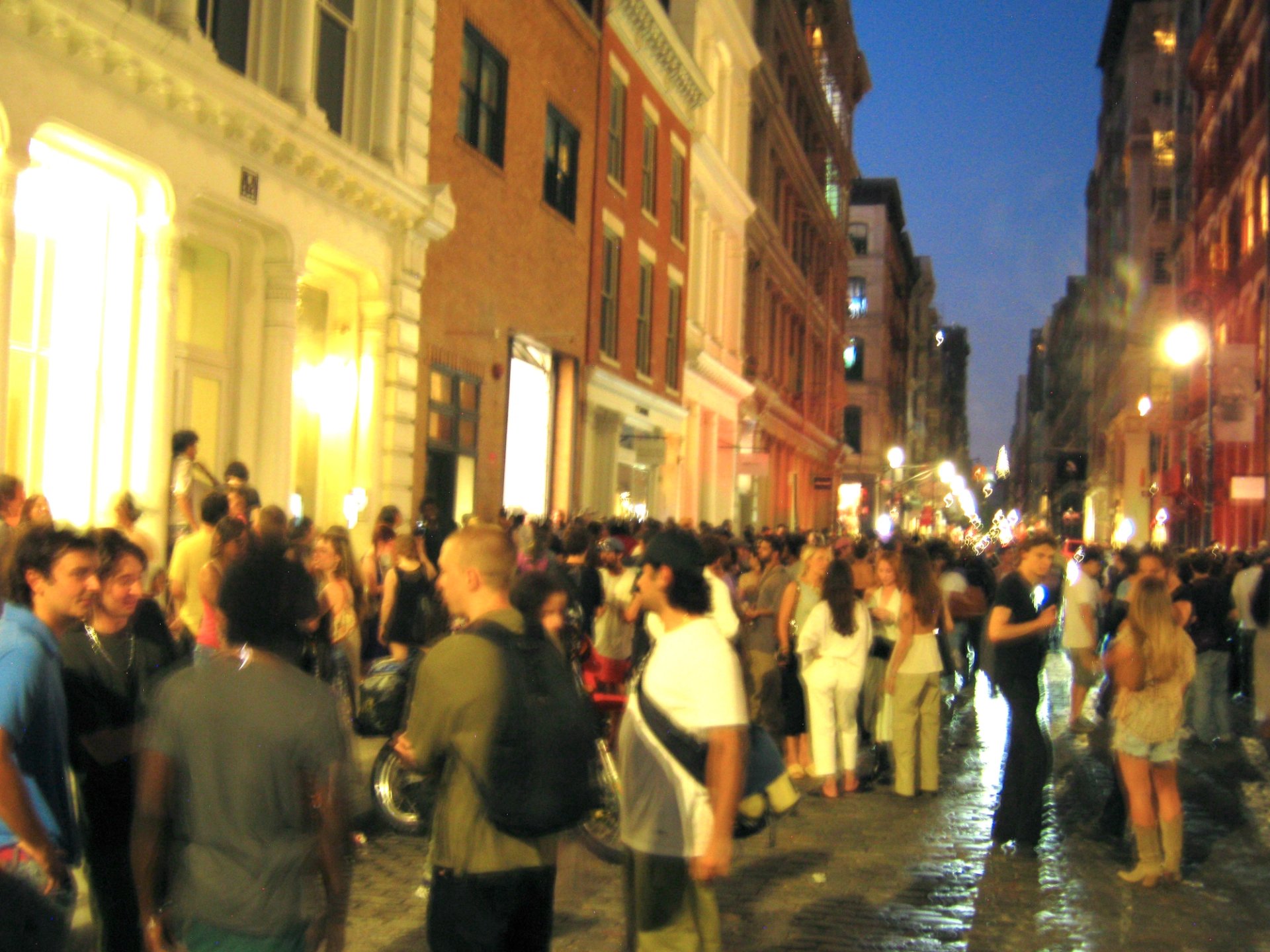
The scene outside 51 Mercer Street during the Revolve opening on 17 July. Courtesy Market Gallery
Much of the art in Revolve is from the past few years, and it speaks directly to a specific downtown set. Zhu, Kass and Irv all have their own work on display, along with that of their friends and contemporaries Lorenzo Amos, Amanda Ba, Maggie Lee, Armando Nin, Marcus Jahmal, Marika Thunder and Aurel Schmidt. The Spring Breakers actress Rachel Korine has a small painting of a horse in the show, listed under the name Rachel Simon.
But the exhibition is also intergenerational, pairing these pieces with works by artists like Kembra Pfahler, Josh Smith, Dash Snow, Mike Kelley and Rammellzee. The oldest work in the show is Rene Ricard’s In the House of the Gods (1989), an oil-on-paper piece referencing Ancient Roman mythology lent by a friend of the gallery.
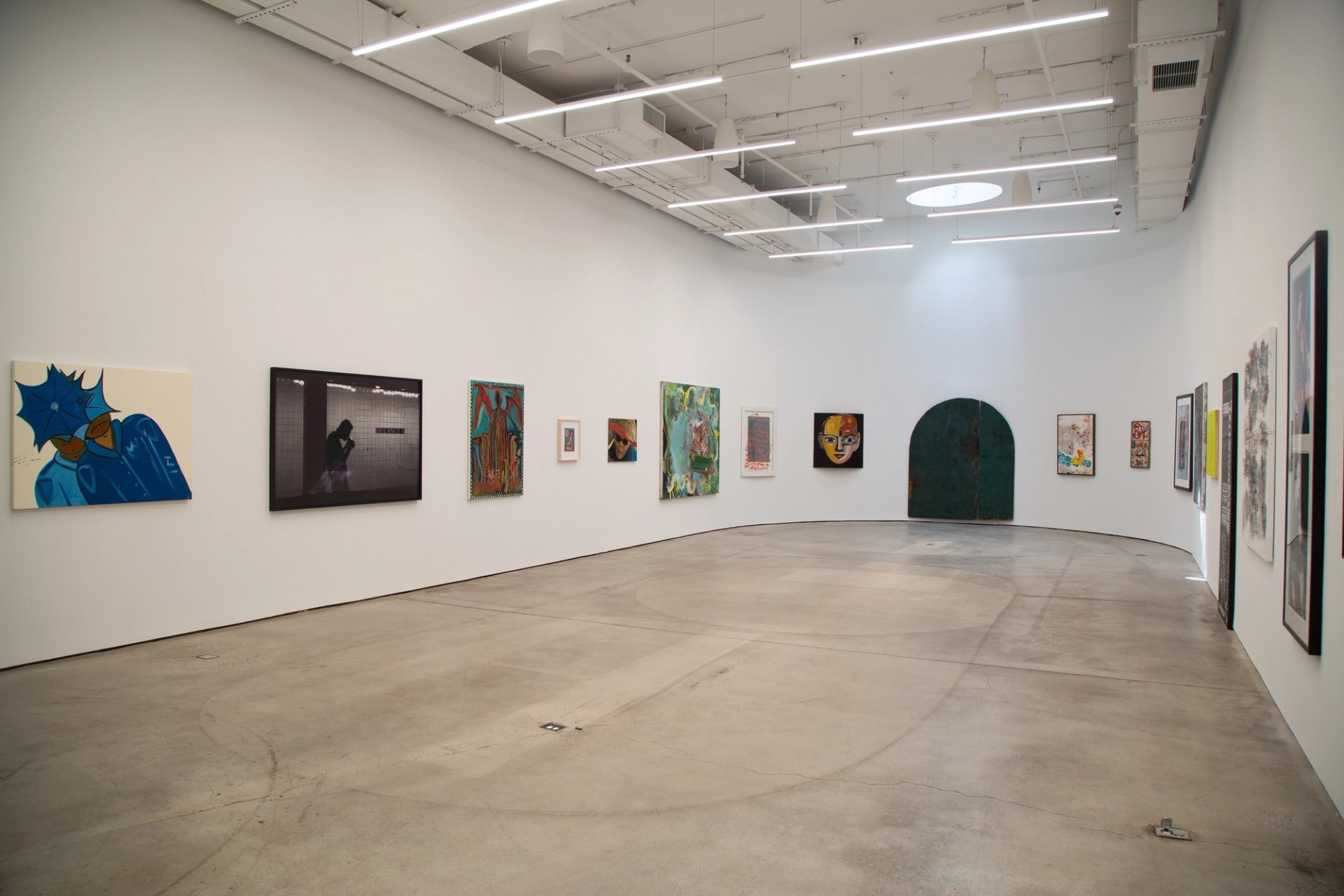
A view of Revolve at 51 Mercer Street. Courtesy Market Gallery
“At first we were like, ‘How does this look like, us putting ourselves next to this Rene Ricard?’” Zhu says. “We weren’t sure if it made sense. But that put us on a train of thought about generational artists, how we can show emerging artists and what is happening in New York right now with what's happened before. That evolved into the theme of the show.”
The plan is for the exhibition to be open every day until at least 10 August. Revolve marks Market Gallery’s first show in a street-level space—for the past eight months, Zhu has put on small but buzzy shows at his apartment, open by appointment only.
An unconventional apartment gallery
Zhu stages the shows in a renovated storage shed located outside on his large wraparound balcony, accessible only by passing through his kitchen and living room. From the deck, visitors have a clear view of a section of the Manhattan Bridge and the subway cars that rumble along it.
“I've strictly done solo shows at the gallery here,” Zhu said last week, speaking from his apartment. “To be here in my space is this very personal thing. With one artist I really like, I can spend a lot of time with them and immerse myself in what they’re doing, and have this full presentation of their work that’s curated tightly.
“On top of that, group shows can be a big draw and I don’t need 1,000 people showing up to my doorstep,” he added. Revolve is supported by the streetwear label Supreme, where Zhu works as part of the brand direction team.
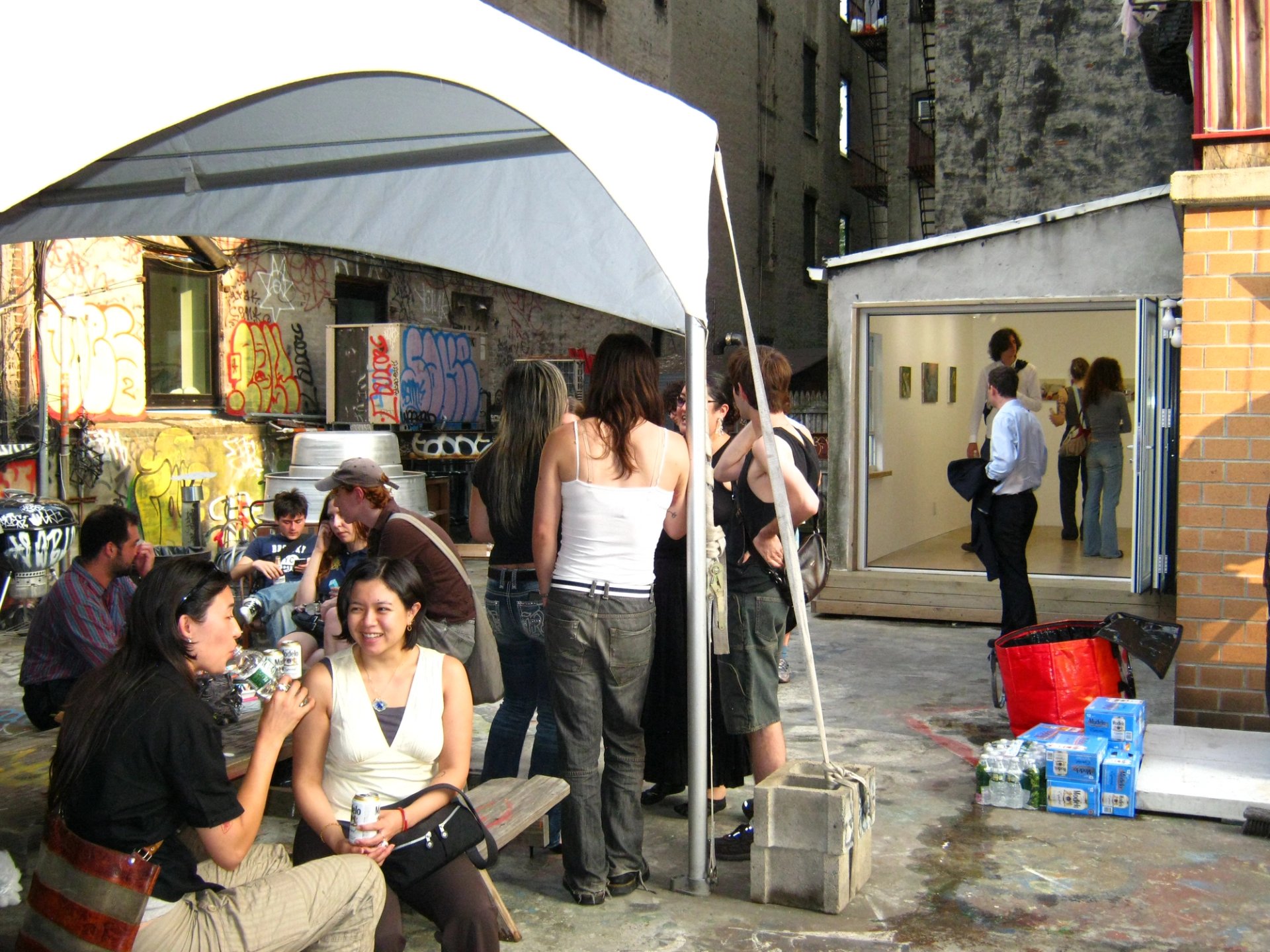
Attendees on Zhu's balcony at the opening for Amanda Ba's Experiments: Private Paintings show. Courtesy Market Gallery
The apartment has served as a creative space since Zhu moved in about a decade ago, he says, often living with a series of musician, artist and skateboarder roommates. Through it all, there has been the shed in one form or another, sometimes serving as a guest room or art studio, and more recently as a rehearsal space for his friends’ jazz band. After the group found another rehearsal space, the shed became dilapidated and “kind of hazardous” because of weather conditions, Zhu says.
“At the time, I was feeling a bit stagnant and uninspired. It’s really easy for people in New York to feel jaded and like things are changing—there's pessimism from gentrification in culture and within [the] arts,” says Zhu, who grew up in Manhattan. “I was feeling that way even in my own career, like I wanted something else to sink my teeth into.”
Kass stepped in to do renovations and, in November 2024, Market Gallery hosted its first show, an installation in which Kass suspended a disco ball draped in plastic netting from the ceiling of the shed.
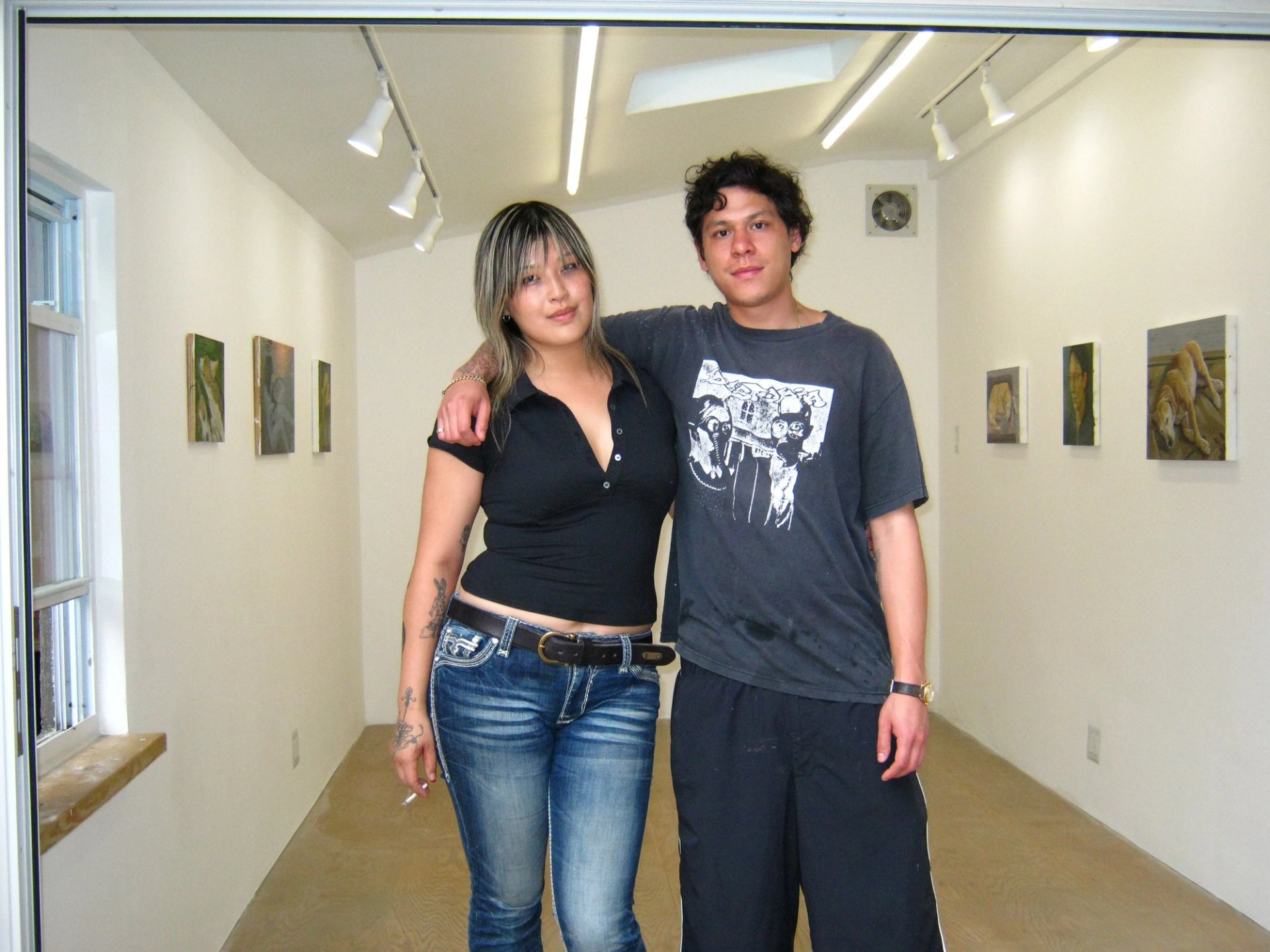
Ba and Zhu at the opening of her show, Experiments: Private Paintings. Courtesy Market Gallery
At first, it seemed just impractical. "Obviously it's not street-side, and you have to go through my apartment,” Zhu says of his decision to open a gallery out of his home. “But I developed this perspective: if I can do something cool for even just 50 people out here on my own terms and in my own way, it would be really special.”
Six more shows have followed since then: Zora Sicher’s intimate self-portraits and photography; a diverse collection of sculptures, a painting and sketches by Jahmal; a video installation by Tucker van der Wyden; a group of paintings by Amos; and the current exhibition, a solo presentation of small, intimate paintings by Ba.
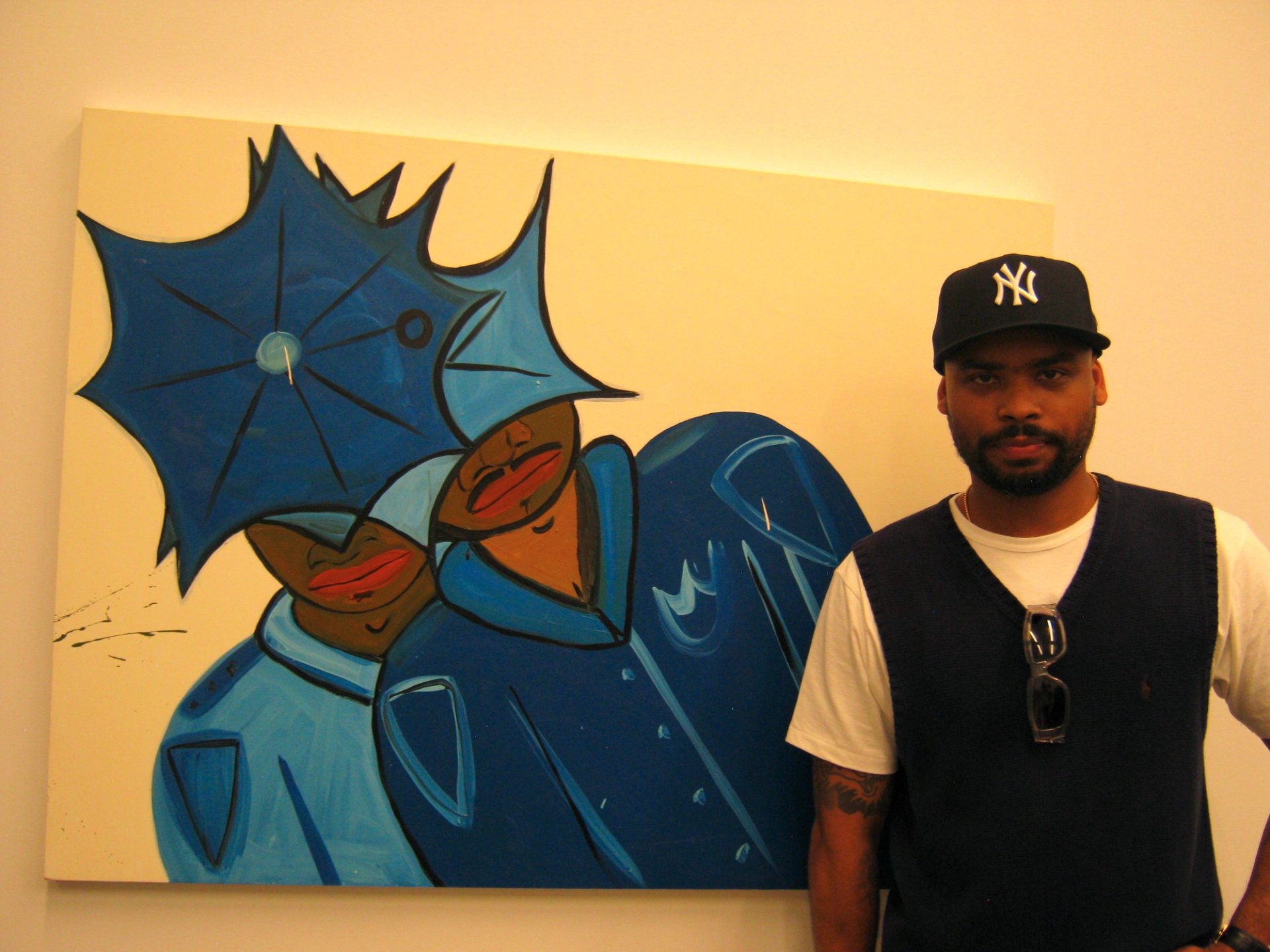
Marcus Jahmal next to his painting Twin Flame (2024). Courtesy Market Gallery
“The ethos of it is a bit different than your typical gallery, and I try to lean into that,” Zhu says. “I'm not an art dealer or a gallerist that is putting pressure to make your art sellable. The idea is, you should be able to feel like you can show something that maybe a bigger gallery would push in a different direction.”
During openings, Zhu can usually be found at the grill, fixing plates for attendees who often include other young artists and gallerists. He says he hopes the gallery will grow enough for him to be able to devote more time and resources to the project.
“I don't think my goal is to set up your standard storefront gallery,” Zhu says. “I'm not saying that won't change—but it's not necessarily my goal to enter the art world, start a blue-chip gallery and become the next biggest art dealer. I'm very much consumed in what I'm doing in the way I'm doing it. I enjoy doing things my way, outside of what I would consider the art establishment.”


